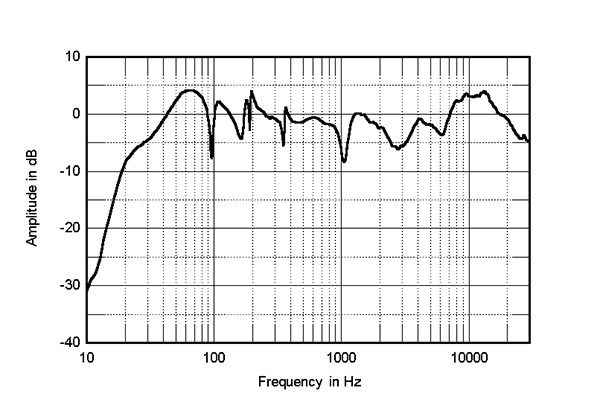Yeah, speakers with lumpy response can tailor our setlist because while they take some songs over the top, they hold others back. Companies like B&W have obviously done some research on their target market and tune their speakers for them I'm great with that because they're a legitimate company building consistent products.
What if a high end speaker measures really badly?
You know, it's true that I feel listening is more important than measurements and that it's generally difficult to really tie together measurements with pleasure. Below 0.05% THD do I care? No I do not. I really don't care. The number tells me nothing about whether I'd like the amp more or not anymore.
In this one memorable review for the Alta Audio Adam speaker, I really felt shivers go up my spine when I looked at the measurements, especially at ~$20kUSD. This looks like an absolute hot mess. Does it sound this bad though? I certainly don't have the $20K to test that out myself. What do you all think?

- ...
- 108 posts total
@helomech wrote: "It’s quite apparent from his posts that Audiokineses doesn’t have a strong grasp of speaker science." Could you elaborate? I'd like to know where you disagree with me. I'm not infallible. Thanks. |
@audiokinesis is a respected speaker designer with decades of experience. |
Just my 5 cents experience... For your point number one, acuity of young and mature ears must be a must for the industry designer but i am 72 years old audiophile and i experimented a lot with acoustics for my own pleasure and for creating my system... I dont use computing tools nor any computing analysis of measurements...😁 I used only my experience and i succeeded correcting the defects ( vibrations/resonance,shielding, and performance in a room ) of my speakers ... I modified them (rearport redesigned) better wave guide and i used a complex set of Helmholtz resonators inside one another with an inside neck and a belt of diffuser behind me between the two speakers... The transformation impact is stupendous... Then we can use our imperfect old ears as tool and knowing what we do when we do it if we had trained them to recognise acoustics basic parameters variation in reality not virtually. I am able to correlate all acoustics parameters with my subjective impression in my own room...It is my second room. I did it 2 times. This make me conclude that measurements are useful for designing good speakers, but we need to measure the relation between speakers and room and our own ears. I could had used the Choueiri method to do the basic inner ears and HTRF measures and could had used his filters and a good DSP. But i dont had it...😊 Then i used my hearing as a tool and my results are staggering . It is not perfect but it is enough to smile at any upgrade... my low cost modified speakers give me holographic sound, immersiveness and listener envelopment with natural timbre. Conclusion : speakers sound exist in a room for specific ears... The set of necessary measures must be a set way more complex than what speakers designers spoke about most of the time...( for example taming the pressure zone distribution in the room with resonators location and dimensions) Because i cannot compute all this parameters i did it with my trained ears... Complete success... Speakers must measure well if the designer know what he is doing...But the real speakers set of measures are done in a room with the ears as tool as i did or with the ears measured if possible ( as with the Choueiri kit)... All audiophiles are not deluded one. And speaking of "golden ears" here it is not super acuity claims about hearing but it is only about training the ears and make them able to correlate subjective perception with acoustics physical parameters. I am a "golden old and less acute ears" in this second sense. I will not be helpless with any speakers in any room because i will know what to do... Exactly like the Roman architect Vitruvius who used resonators in theater architecture without electrical tools nor computer...and even today acoustician are stunned by ancient theater acoustics.. . Vitruvius was "golden ears"...
What is a speaker for me ? A Helmholtz resonator... What is a room for me ? A Helmholtz resonator... What is a speakers set in a room ? The same thing as the thing i had designed yesterday : it is a resonator inside a resonator as the one i put behind my listening position... 😋 Then all must be tuned, mechanically, electrically and acoustically ...
For me high end gear is often more about price tags than about acoustics qualities...Anyway who will buy 100,000 bucks speakers? Most of the time someone not interested by acoustics and not interested by the time and method necessary to create a room for his speakers and for his ears..
|
- 108 posts total

